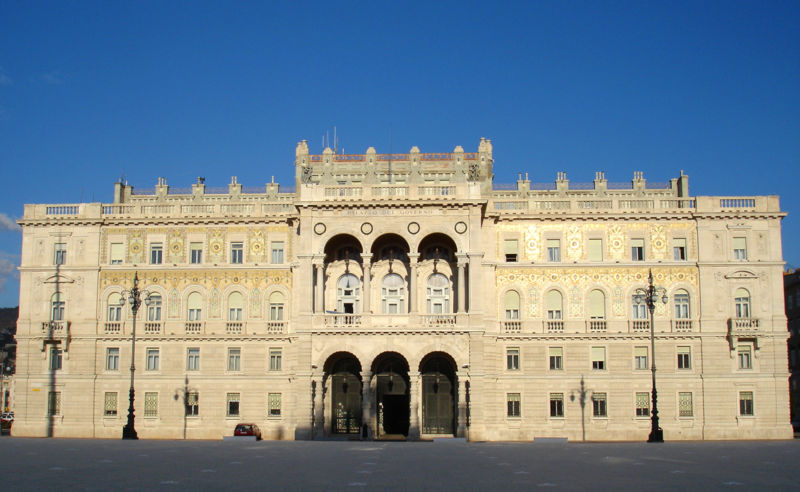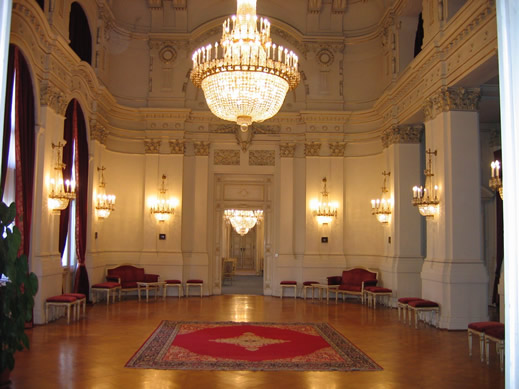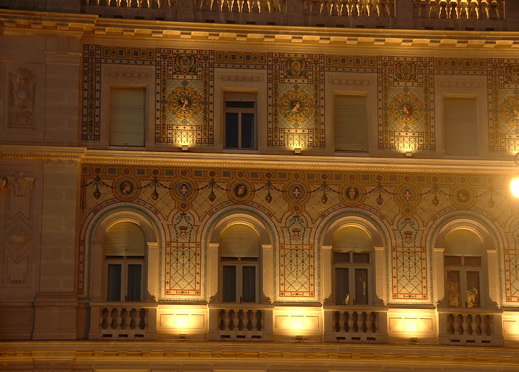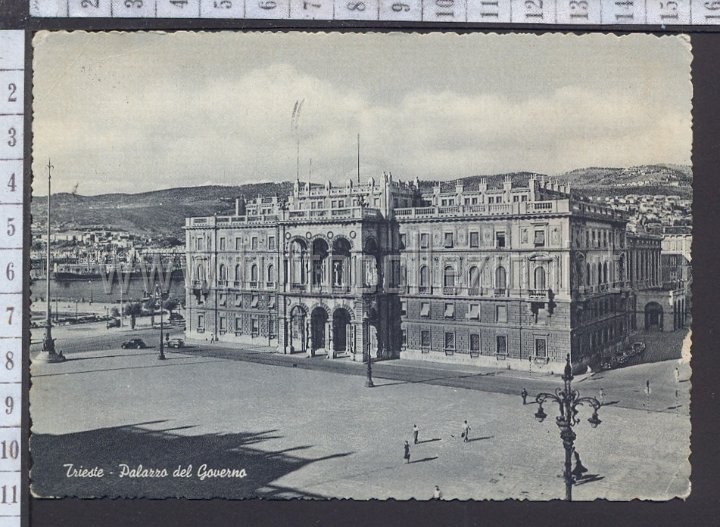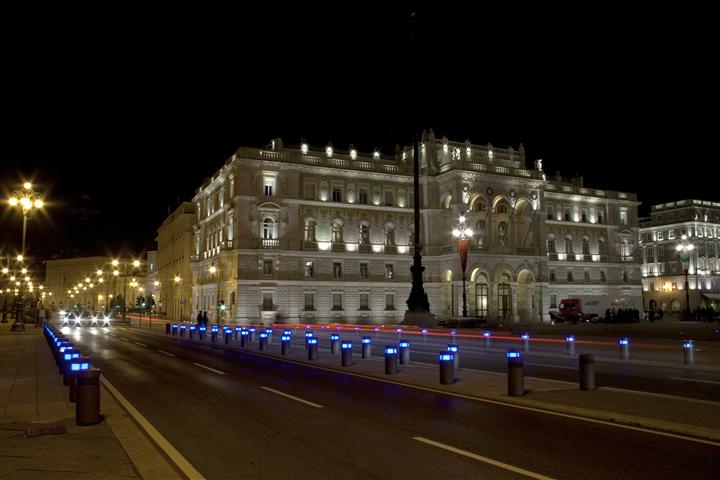Palazzo del Governo (1901 - 1905)
piazza dell'Unità d'Italia
Arch. Emil Artmann
The Palazzo del Governo in Trieste is the last in order of time to have been built in Piazza Unità d'Italia and today houses the offices of the Prefecture, the home of the Prefect and several guest rooms. The building is located on the site that once supported the Mandracchio pier.
In 1764, at the behest of the Empress Maria Theresa of Austria, on the basement of the Mandracchio basin, the palace of the Captain Lieutenant was built. Demolished in 1899, on the same site stands the current Palazzo del Governo, built between 1901 and 1905 on a project by the Viennese architect Emil Artmann who, like many of the buildings in Trieste built near the sea, rests on a platform with a thickness of 160 cm supported by 3000 concrete posts, in order to contrast the instability of the subsoil.
Quadrangular with a central courtyard, externally it presents a horizontal partition of the facades consisting of a rusticated base in white stone up to the level of the first floor, an upper band covered with a mosaic decoration and the stone balustrade of the roof terrace. On the main facade there is a loggia with two overlapping levels divided into three arched spans, supported at the bottom by columns and pillars that reproduce the rusticated motif of the first level of the building and at the top by smooth columns with Ionic capitals. On the balustrade of the terrace above the loggia there are groups of cherubs with an allegorical meaning. Stylistically, the building is inspired in part by Renaissance architecture and in part by the Viennese Sezession style.
The mosaics of the facades were made in Innsbruck based on a design by the Viennese Giuseppe Straka and depict ornamental and figured motifs. Allegorical male and female heads of practical and intellectual activities are repeated on two levels; those placed further down were originally interspersed throughout the building with coats of arms of the Habsburg house. After the First World War these coats of arms were partially replaced with that of the Savoy house, that is, a white crusader shield on a red field, a motif that can be seen on the main facade (while the Habsburg eagle remained on the sides). Delicate garland motifs are arranged around the allegorical heads or connect them together like a festoon with a profusion of golden, green, blue and white tesserae.
Internally, porcelain vases with floral bouquets (made of light bulbs) are inserted in the decorative niches on the landings of the two-flight staircase leading to the second floor for suggestive ambient lighting. On the second floor, there are a series of reception rooms with wooden oak parquet floors, stucco floral motif decorations, crystal chandeliers and large mirrors framed by gilded stucco decorations. At the end of the entrance corridor stands a painting by Cesare Sofianopulo dated 1946 which represents San Giusto full-length with its typical recognition attributes, placed on the shore of the sea with hair blowing in the wind. In the red hall, adorned with a wallpaper with white and red vertical stripes, there are some vases with gallant scenes inspired by Rococo painting and some paintings, that is three still lifes and a Canalettian-inspired "View of Venice".
In the large ballroom (located at the external loggia) pilasters from the Corinthian capital support the gallery reserved for musicians, which is decorated with geometric elements of secessionist taste, similar to those present externally on the crowning parapets of the building. In the dining room, a series of monochromatic over-door paintings representing places and buildings in Trieste and in the province with the appearance they had at the beginning of the twentieth century and which, in some cases, appear today modified by works or restorations, are of great interest. Among these, representations of the Churches of San Giusto, Santa Maria Maggiore and Sant 'Antonio Nuovo, of the Arco di Riccardo and of the Roman Theater, of the Verdi Theater and of the Miramare Castle, of some city squares and a section of the railway.




